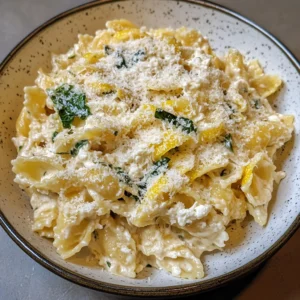Step 1: Boil Water
Fill a large pot with water. Add a generous pinch of salt. Bring to a rolling boil over high heat. The salt not only seasons the pasta but also helps to raise the boiling point of the water, allowing the pasta to cook more evenly. Don't be shy with the salt - think of it as salting the ocean!
Step 2: Cook Pasta
Add the pasta to the boiling, salted water. Cook according to package directions, subtracting about 1 minute from the recommended cooking time. You want the pasta to be al dente, meaning "to the tooth." This is because the pasta will continue to cook slightly in the sauce, and you don't want it to become mushy. Set a timer to keep track.
Step 3: Make the Browned Butter Lemon Sauce
While the pasta is cooking, prepare the browned butter lemon sauce. In a large skillet (at least 12 inches in diameter) over medium heat, melt the butter. Let the butter melt completely and continue to cook, swirling the pan occasionally, until it begins to foam, then turn a golden brown color, and smell nutty. This process takes about 3-5 minutes. Be careful not to burn the butter! The browned butter adds a depth of flavor that elevates the entire dish. Once the butter is browned, immediately add the lemon juice and lemon zest to the skillet. Be careful, as the mixture will bubble up. Then, add a tablespoon of extra-virgin olive oil. The olive oil helps to emulsify the sauce and add a richer texture.
Step 4: Reserve Pasta Water
Before draining the pasta, reserve ½ cup plus 2 extra tablespoons of the starchy pasta water. This pasta water is liquid gold! The starch in the water helps to bind the sauce together and create a creamy emulsion. Don't skip this step!
Step 5: Add Pasta to Sauce
Drain the pasta and immediately add it to the skillet with the browned butter lemon sauce. Pour in ½ cup of the reserved pasta water. Increase the heat to medium-high and stir to combine, coating the pasta evenly with the sauce. Continue to cook, stirring frequently, for about 2 minutes, or until the pasta is perfectly al dente and the sauce has thickened slightly. The pasta will absorb some of the sauce as it cooks, creating a richer, more flavorful dish.
Step 6: Prep Ricotta in a Bowl
While the pasta is cooking in the sauce, prepare the ricotta mixture in a large serving bowl. Add the ricotta cheese, grated Parmigiano Reggiano cheese (or Pecorino Romano), a drizzle of extra-virgin olive oil, and a dash of salt. Stir it together well to combine. Add a tablespoon or two of the reserved pasta water to help loosen the ricotta mixture and create a smoother, more sauce-like consistency.
Step 7: Combine Ricotta with Pasta
Transfer the pasta and sauce from the skillet to the bowl with the ricotta cheese mixture. Stir it all together gently but thoroughly to combine, coating the pasta evenly with the creamy ricotta sauce. If the sauce seems too thick, add a little more of the reserved pasta water or a drizzle of olive oil until you achieve the desired consistency. You should have a luscious, creamy sauce that clings to every strand of pasta.
Step 8: Season
Taste the pasta and adjust the seasoning as needed. Add more salt, if necessary, and a generous grinding of fresh black pepper. Don't be afraid to be generous with the pepper, as it adds a nice bite to the creamy sauce.
Step 9: Serve
Serve the Creamy Lemon Ricotta Pasta immediately in bowls. Sprinkle each serving with chopped Italian parsley and a little extra grated Parmigiano Reggiano cheese, if desired. Enjoy!
